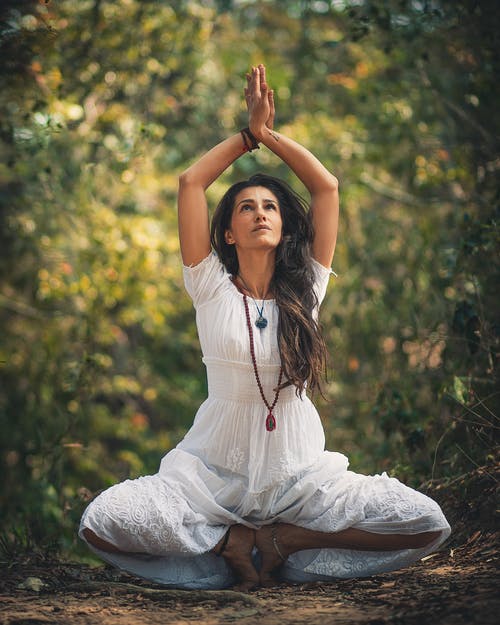Yoga impacts American society, as seen by the prevalence of yoga trousers and related paraphernalia. According to Yoga Journal and Yoga Alliance’s “Yoga in America” poll, roughly 36.7 million yoga practitioners in America in 2016, up from 20.4 million in 2012In just four years, the company has grown by more than 50%.
You could be putting off starting yoga because you have certain preconceived beliefs about it. If this is the case, it is time to clear the air. Here’s a straightforward explanation of the procedure.
Top Health Advantages of Yoga:
This data is based on regular practice of traditional asana, pranayama, and meditation and divide into three categories: physiological advantages, psychological benefits, and biochemical impacts.
Please note that while some asanas, some types of pranayama, and some stages of meditation may cause an increase in pulse rate, etc., the overall advantages to general health are as indicated below. Please check James Funderburk’s Science Studies yoga and other resources shown after this page for information on the physiological changes that occur with the practice of various asanas, etc.
Physiological Advantages
Autonomic nervous system balance, with a tendency toward parasympathetic nervous system dominance rather than the regular sympathetic nervous system dominance caused by stress
- Galvanic Skin Response (GSR) increases
- Endocrine function normalizes
- Excretory functions improve
- Musculoskeletal flexibility and joint range of motion increase
- Posture improves
- Strength and resiliency increase
- Endurance increases
- Energy level increases
- Weight normalizes
- Sleep improves
- Immunity increases
- Pain decreases
Know the Psychological Advantages of Yoga:
- Increases in somatic and kinesthetic awareness
- Improvements in mood and subjective well-being
- Increases in self-acceptance and self-actualization
- Increases in social adjustment
- Decreases in anxiety and despair
- Decreases in hostility
Psychomotor Functions Improve:
- Grip strength increases
- Dexterity and fine skills improve
- Eye-hand coordination improves
- Choice reaction time improves
- Steadiness improves
- Depth perception improves
- Balance improves
- Integrated functioning of body parts improves
Cognitive Function Improves:
- Attention improves
- Concentration improves
- Memory improves
- Learning efficiency improves
- Symbol coding improves
- Depth perception improves
- Flicker fusion frequency improves
Effects of Biochemistry
The biochemical profile improves, indicating a stress-relieving and antioxidant impact, crucial in preventing degenerative illnesses.
- Glucose drops
- Sodium drops
- Total cholesterol drops
- Triglycerides drops
- HDL cholesterol rises
- LDL cholesterol falls
- VLDL cholesterol falls
- Cholinesterase rises
- Lymphocyte count rises
- Total white blood cell count falls
- Thyroxin rises
- Vitamin C rises
- Total serum protein rises
- Oxytocin rises
- Prolactin rises
- Oxytocin rises
Here Is Why You Must Incorporate Yoga into Your Daily Routine:
1. Yoga Does Not Need Flexibility.
To suggest that you must be flexible to perform yoga is like stating that you must be in shape to go to the gym or be clean to shower. Although there is a link between yoga and flexibility, it is not necessary to practice yoga.
“Yoga does not need you to touch your toes. “Bend your knees if you want to touch your toes,” advises Kelly DiNardo, a 200-hour Registered Yoga Teacher (RYT) and co-author of “Living the Sutras.”
“Whether or not you practice should not be determined by your flexibility. Yoga may help you grow more flexible over time—why it’s called a practice—but you don’t have to be Gumby to begin. Yoga does not require flexibility; it is a by-product of It.” says a yoga teacher Mathews also leading a group of top-quality online Essay Help services.
2. Yoga Is Suitable for Everyone
Yoga is suitable for people of all ages, sizes, genders, ethnicities, and fitness levels. Social media may have fostered the image of yoga in America, with slim, bendy young women flocking to studios and beaches to do pretzel-like body contortions. However, yoga’s authentic vision (and aim) extends beyond that.
Jenny Rose, a 500-hour RYT, online fitness instructor, and wellness influencer, says, “It bothers me to think that people are frightened to attend to yoga because of what they see online.” “Yoga is for you, me, my sisters, brothers, nephews, and grandparents, to name a few. Yoga is for everyone, and yoga means “unity.”
Yoga is inclusive and friendly, and as Rose pointed out, it is a discipline for all. You also don’t have to be a set age to participate. According to the 2016 Yoga in America study, just 19% of American yoga practitioners were 18 and 29. The majority of practitioners were above 30, with 38% falling into the “50+” group. Yoga is beneficial to people of all ages, from children to the elderly.
3. Yoga Isn’t a Religious Practice
There is a lot in yoga that appears “religious” to the naive Westerner. Yoga does have a spiritual component, but it’s important to remember that it’s not a religion in and of itself.
“Mantras and chants have been utilized for many years in yoga’s Indian roots,” writes Brad Ormsby of Freedom Genesis, a yoga and meditation site. “They’re supposed to help you focus and awaken within, but they’re not necessary for yoga.”
Even if you want to participate in the mantras and chants, you are not “converting to yoga” in the sense that you are converting to a new religion. “Yoga has a spiritual aspect that encourages you to connect with a higher force, but it is non-denominational so that you can do it as a follower of any religion,” explains Christa Fair, brother, owner of Bee Content Yoga and a 500-hour RYT.
4. Practicing Yoga Doesn’t Require Being a Hippie
Yoga is a form of exercise that promotes self-awareness, love, and belonging in the world. Many practitioners make decisions that appear “hippie-like” to the outer world as they become more attentive and conscientious of their activities. If you don’t fit into the hippie lifestyle, though, you won’t be an outcast.
According to the 2016 Yoga in America poll, half of the yoga practitioners claim to “live green, eat sustainably, and volunteer time to their community “1—all excellent qualities, by the way—but the other half do not. So, for the record, yogis are not required to abstain from meat, join a commune, or refrain from wearing commercial deodorant.
Conclusion
Will guide you through an asana sequence (poses) that resemble stretching in a regular yoga session. However, the physical aspect of yoga is only a tiny part of the whole picture.
“Yoga is all about the breath,” Rose explains. “Yoga’s actual objective is to move your body, connect with your breath, and be present in the moment.” The sole ‘objective,’ in a traditional sense, is to release excess energy so that you may sit and meditate.”
These are some of why yoga is regarded as more of a discipline than an exercise. Being a practitioner entails more than what happens on your yoga mat for 60 minutes, and it’s all about what you take a 60-minute session and applying it to the rest of your day.



